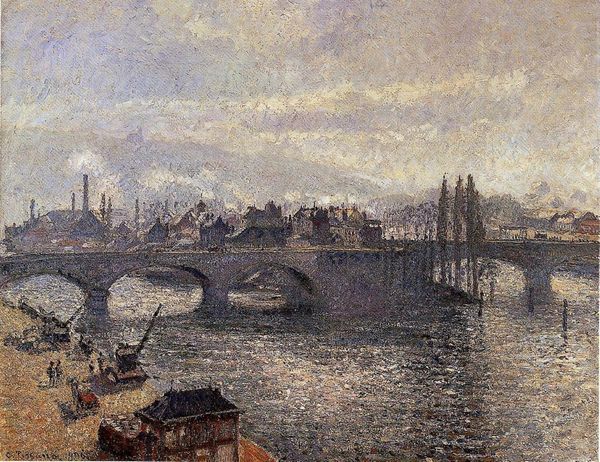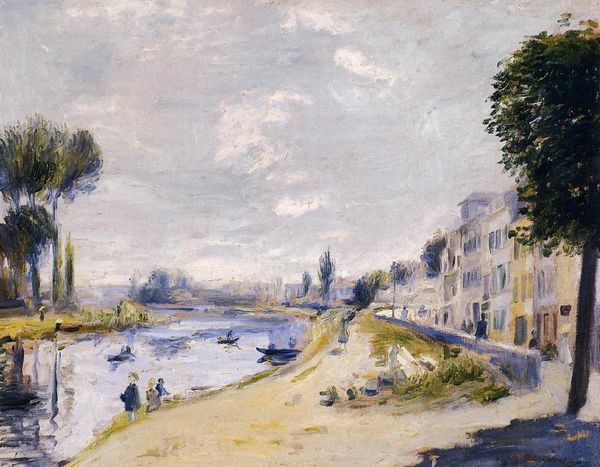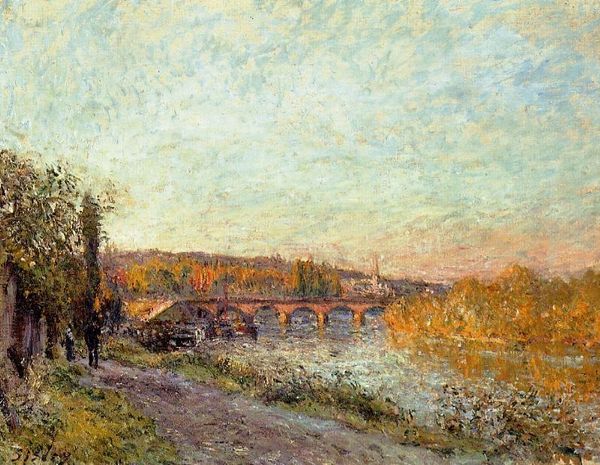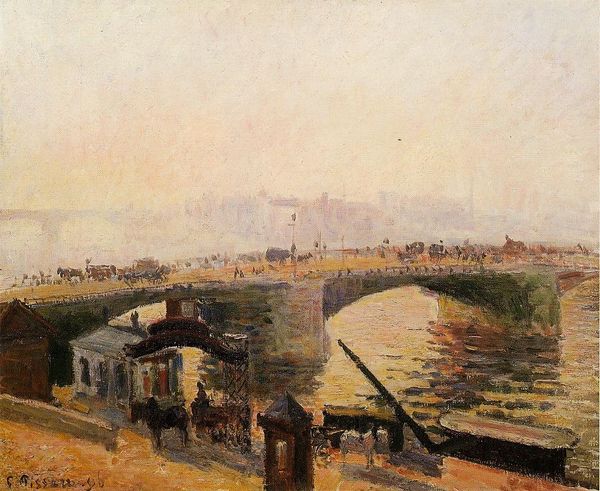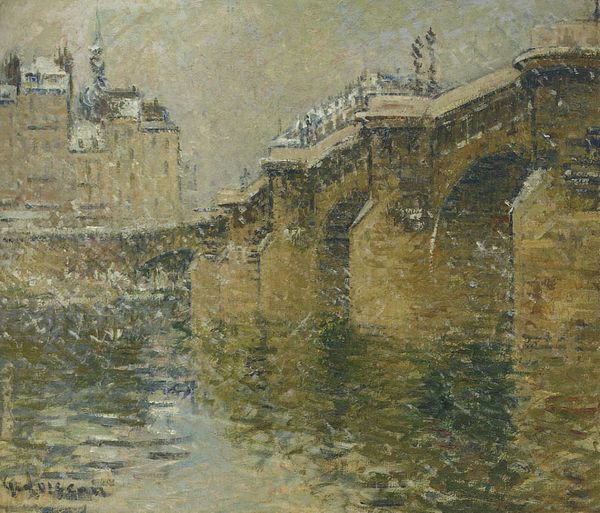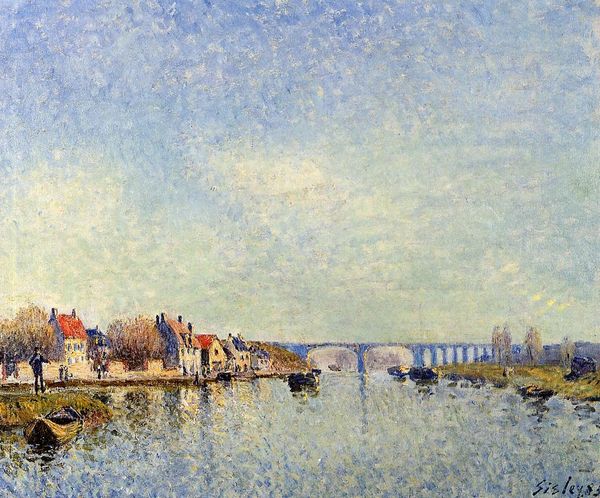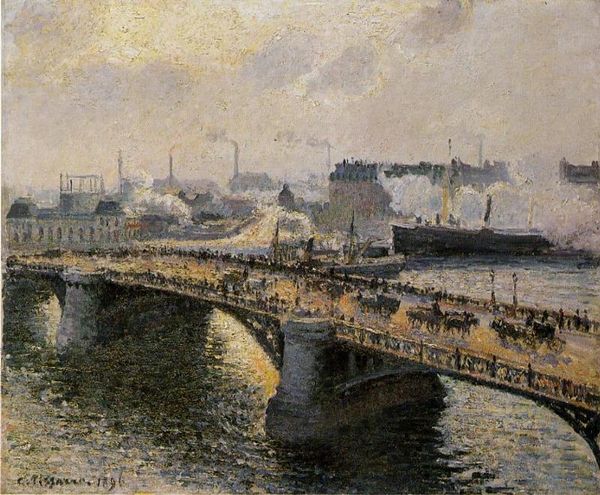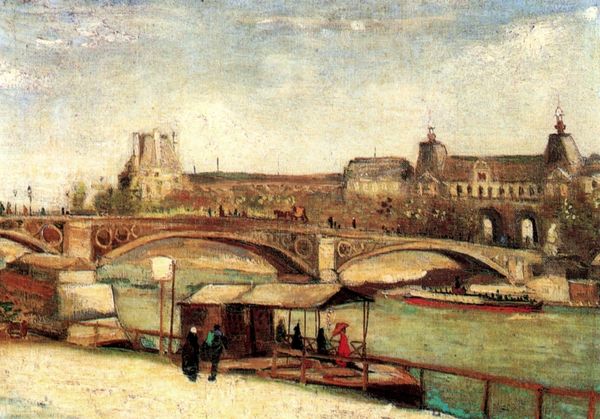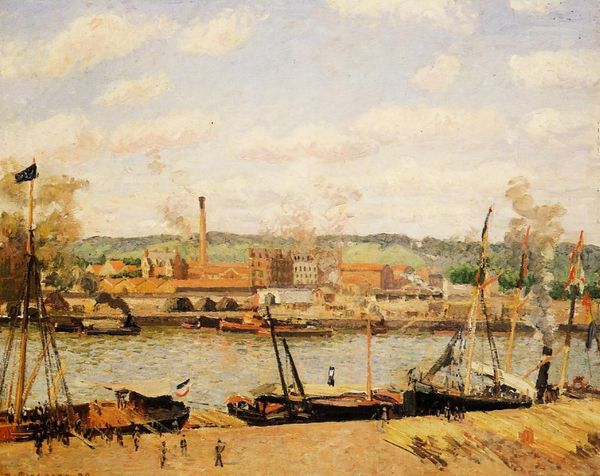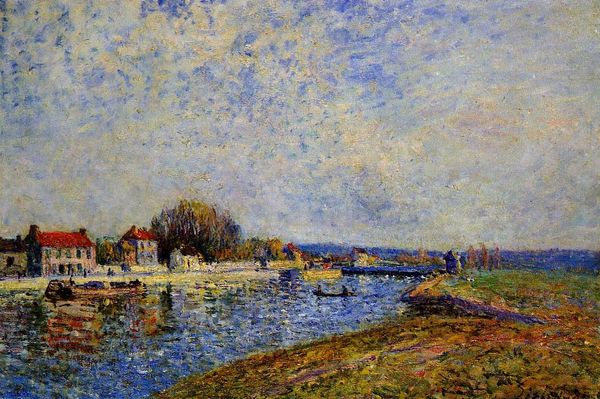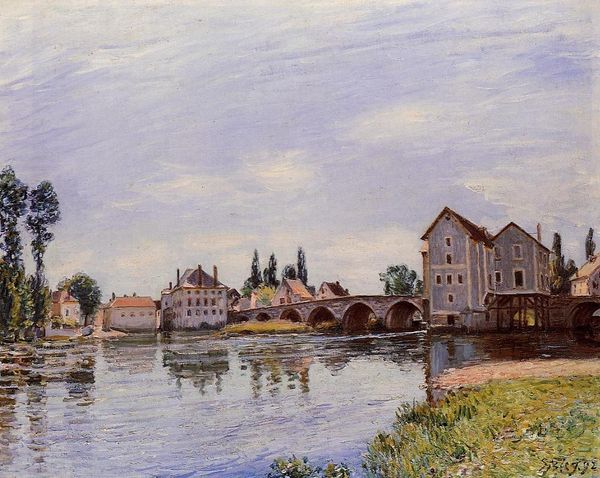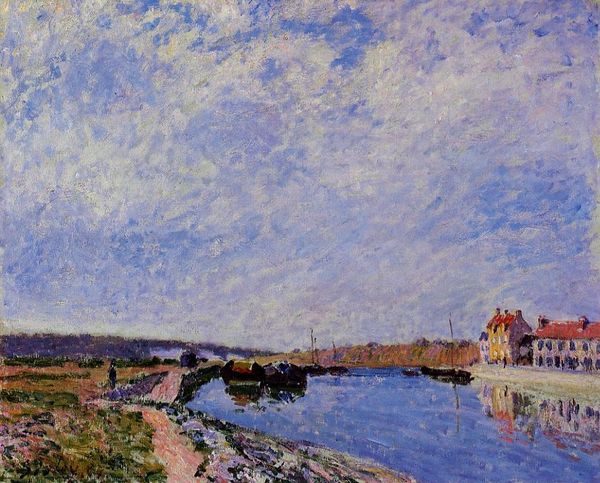
Copyright: Public domain
Curator: Looking at this image, I see industrial melancholy. It's beautiful, yes, but also a little…oppressive. What's your take, Editor? Editor: I think you've hit on something important, Curator. We're observing "Sunrise at Rouen," an 1898 oil painting by Camille Pissarro. The series, created en plein-air, shows various perspectives of Rouen’s industrial riverbank across the seasons and times of day. Curator: The steam rising from the factory chimney in this one, cutting into that otherwise lovely sunrise…it feels like such a loaded image. Was he making a commentary on industrial pollution? On capitalist modernity? Editor: Pissarro was deeply interested in anarchism and social justice. In this view of Rouen, there is a record of the dramatic transformations underway at the close of the nineteenth century, in Rouen and Europe more broadly. Curator: And yet, the brushstrokes, the pastel hues, still have that dreamy quality we associate with Impressionism. Is there a tension between the technique and subject matter? Is he romanticizing industrialization, or critiquing it in disguise? Or, both? Editor: That tension you highlight is vital. Consider, that this work belongs to a collection that features diverse vantage points along the river, including a depiction of boats delivering provisions. It suggests an infrastructure that connects urban centers with regional agriculture. Curator: The smoke plume suggests not only modern progress, but the violence of that progress against both workers and the environment. Perhaps Pissarro intended for that uneasy co-existence of beauty and brutality to force a reckoning? Editor: Precisely. It mirrors the contradictions within the anarchist movement itself – a desire for radical change tempered by an appreciation for aesthetic harmony and social order. The fact that the work is painted *en plein air* heightens this sensibility. Curator: Viewing it now, through our contemporary understanding of climate catastrophe, that factory chimney seems like a particularly prescient symbol. It’s a document, and perhaps, a warning. Editor: Indeed. Pissarro's paintings provide a tangible glimpse into our collective past and prompt crucial questions about the legacy we're creating for the future. Curator: Food for thought, to say the least.
Comments
No comments
Be the first to comment and join the conversation on the ultimate creative platform.
